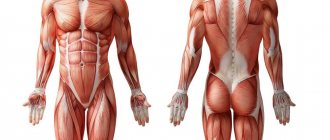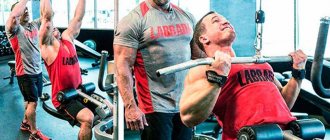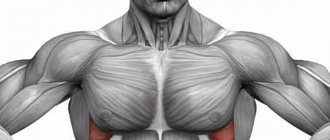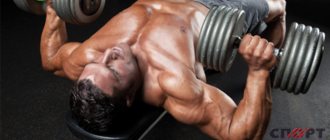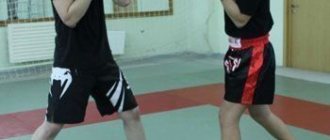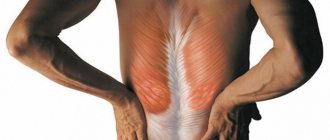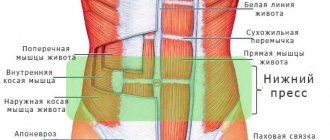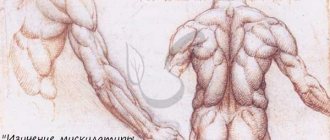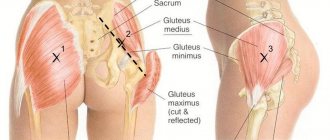Dynamic and static work of muscles is necessary for the normal functioning of the human body, the execution of movements characteristic of our body. The human body is designed by nature to cope well with both types of stress. Dynamic and static work of muscles allows you to walk, jump, run, make movements familiar in everyday life, sit in one place, and stand. In short, any human activity, from immobility to active sports exercises, is a complex muscle functionality formed by two types of actions.
Statics
Let's begin to understand what happens to our muscle fibers in a situation of immobility. The difference between static and dynamic muscle work is the purpose of such activity. Peace and temporary immobility are needed by any creature; this is a natural requirement that allows long periods of time to perform monotonous tasks. The most typical idea of using such capabilities in everyday life is spending many hours in front of a computer screen in a sitting position. But this is only the very first example that comes to mind. Let's consider how a welder works? The specialist has to hold the equipment used in the same position for quite a long time - this is practical static muscle work. Dynamic work will be activated at moments when it is necessary to make active movements - to move to the next object.
Statics assumes that the body is forced to remain motionless for long periods of time. Often such poses are quite constraining and cause not just inconvenience, but pain. It is noted that the dynamic and static work of skeletal muscles is associated with a certain load on the human body, but it is immobility that poses the greatest danger. In excess, it is harmful to systems, organs, and tissues.
Dynamic and static modes of muscle work
- During dynamic work, there is an alternation of contractions of antagonist muscles (for example, flexors and extensors), their alternating tension and relaxation.
- In the static mode, the same muscle group is continuously tense. When we walk, holding a heavy bag in our hand, our legs work in a dynamic mode, and the loaded hand works in a static mode.
We can also talk about isotonic and isometric modes of muscle work. In the first case, the tension of the muscle fibers is constant, but their length changes; in the second, the length of the muscle remains unchanged, but its tension changes. When we perform a typical static load, say, carry a suitcase, the muscles of the arm holding the suitcase perform both isotonic (since the weight of the suitcase is unchanged) and isometric (since we choose one, the most comfortable position of the arm for us and do not change it until , until we take the load in the other hand). In its pure form, the isotonic mode (for example, pulling up on a bar) or the isometric mode (the work of a training athlete with a rigid expander, when muscle tension changes while their position remains almost unchanged) are types of strength exercises, which in their characteristics are closer to static activity.
Two mysteries of static stress
There are two characteristic features of static muscle tension that sharply distinguish them from dynamic work and have long attracted the interest of scientists. Firstly, it is well known that the static mode is much more tiring than the dynamic one. Suppose a person is physically well trained and can cut wood for hours without complaining of extreme fatigue. Invite him to stretch his hand to the side, place a coin on his palm and see how long he can hold this, frankly, not very large load. Within a few minutes the hand will begin to fall. Of course, it was not the weight of the penny that bent the arm; its muscles were tired of their own weight.
Many other examples can be given. Skaters, as we all know, run in a “tilted” position: this is how they overcome, or rather reduce, air resistance. At a speed exceeding 10 km/h, the headwind is equivalent to a force 10 storm. Ask a speed skater which muscles get tired first. The athlete will say that his back and lower back get tired first of all. It is these muscles that carry a static load when in a tilted position. So, even small static tensions tire much faster than much more intense dynamic muscle work.
Secondly, when studying static loads, physiologists discovered another fact, which was completely mysterious. It turned out that during work, a person’s breathing and blood circulation increase disproportionately modestly. In some cases, the body's oxygen consumption even decreased compared to the pre-working level. At the end of the static load, during the rest period, all of the above indicators increase, but still less than during dynamic activity. This phenomenon was even called the Lindgard phenomenon after the Danish scientist who described it.
The answer to both mysteries of static stress was obtained by studying the central nervous mechanisms that control human muscle function. The greatest fatigue of the static mode is associated with the continuous work of the same nerve centers that control a given muscle group. It is the higher nerve centers that are the limiting link here. During dynamic activity, the alternately involved brain centers that control the antagonist muscles tire much more slowly for two reasons.
Firstly, flexors and extensors, and therefore their nerve centers, work alternately - a period of activity is replaced by a period of rest. Secondly, and this is even more important, mutual stimulation takes place: excitation of the nerve centers of the flexor muscles causes inhibition of the centers that control the extensors, and inhibition accelerates the recovery processes. This means that the point is not only in the presence of short rest pauses, but also in receiving, as it were, additional outbreaks of the recovery process, “recharges” during these pauses.
With all types of so-called cyclic motor activity (walking, running, swimming), a similar mutual stimulation of nerve centers is observed during work. That is why dynamic activity, even intense, is less tiring than static activity. Muscle work has a very difficult effect on internal organs. On the one hand, it requires energy supply, and therefore, no matter which muscle group is working, the body responds to this work by correspondingly deploying functions that deliver oxygen, that is, breathing and blood circulation.
On the other hand, the muscles are connected to certain nerve centers of the spinal cord, which directly control them and lie in certain spinal segments (cervical, thoracic, lumbar, etc.). The brain and its highest department, the cerebral cortex, being the supreme regulator and source of voluntary muscle work, controls not so much individual muscles as their group actions, integral motor acts. The centers of the spinal cord transmit orders “from above” to specific muscles, and lie in the same segments where the centers of certain internal organs are located.
For example, the centers of the muscles that carry out a number of movements of the left hand are “neighbors” of the centers that control the state of the heart, therefore, with angina pectoris, pain is “sent” to the left hand. It is clear that the work of muscles can, in turn, influence those organs whose centers nature has placed “neighborhood”, in the same segments of the spinal cord. In this case, the functions of internal organs may change not in connection with the needs of energy supply for work, but in response to the activity of certain muscles. Physiologists speak in this situation about motor-visceral reflexes from certain muscles to certain internal organs. This point has serious practical significance, is taken into account in therapeutic gymnastics, and is, obviously, one of the significant operating factors in a number of asanas in the hatha yoga system.
What's special?
As research laboratory work has shown, dynamic and static muscle work provokes muscle fatigue of a different nature. Every person knows this perfectly well, although he does not formulate it in terms for himself. For example, after spending many hours in front of a computer monitor, you need to walk and warm up, then your health will immediately improve.
Experts note that the best effect is produced by changing types of activity. Various movements in everyday life are much more beneficial and easier for the body's systems than maintaining the same posture for a long time. On the other hand, a comparison of dynamic and static muscle work makes it possible to understand that overloads of any kind lead to serious pathologies. Therefore, it is necessary to avoid such situations whenever possible. The key rules for maintaining health for many years are the following postulates:
- Everything should be in moderation.
- It is necessary to adhere to the “golden mean”.
Considering how dynamic muscle work differs from static work, it can be noted that for this type of activity it is important not only the general condition of the muscle tissue of the body, but also the ability to coordinate the movements performed by various parts of the body.
Categories
Modes of muscle work Mechanical work (A) performed by a muscle is measured by the product of the lifted weight (P) by the distance (h): A = P * h kgm. When recording the work of an isolated frog muscle, it is clear that the larger the load, the lower the height to which the muscle lifts it.
There are 3 modes of muscle work: isotonic, isometric and auxotonic. The isotonic regime (regime of constant muscle tone) is observed in the absence of load on the muscle, when the muscle is fixed at one end and contracts freely. The voltage in it does not change. This occurs when an isolated frog muscle is irritated, fixed at one end to a tripod. Since under these conditions P = 0, the mechanical work of the muscle is also zero (A = 0). In this mode, only one muscle works in the human body - the muscle of the tongue. (In modern literature, the term isotonic mode is also found in relation to such a contraction of a muscle with a load, in which, as the length of the muscle changes, its tension remains unchanged, but in this case the mechanical work of the muscle is not equal to the bullet, i.e. it does external work) .
The isometric mode (constant muscle length mode) is characterized by tension of the muscle when it is fixed at both ends or when the muscle cannot lift too much load. In this case, h = 0 and, accordingly, mechanical work is also zero (A = 0). This mode is observed when maintaining a given pose and when performing static work. In this case, the processes of formation and destruction of bridges between actin and myosin still occur in the muscle fiber, i.e., energy is spent on these processes, but there is no mechanical reaction of movement of actin filaments along myosin. The physiological characteristics of such work consist in assessing the magnitude of the load and the duration of the work.
The auxotonic mode (mixed mode) is characterized by a change in the length and tone of the muscle, the contraction of which causes the load to move. In this case, mechanical work of the muscle is performed (A = P ? h). This mode manifests itself when performing dynamic muscle work even in the absence of an external load, since the muscles overcome the force of gravity acting on the human body.
There are 2 types of this mode of muscle work: overcoming (concentric) and inferior (eccentric) mode. To measure muscle strength, dynamometers are used: wrist and backbone. The maximum strength of the hand, kgf, is calculated as the arithmetic mean of three compressions of the dynamometer with maximum force after one minute. By developing tension and contracting, the muscle is able to perform mechanical work. It does the most work at medium loads and medium speeds. This phenomenon is called the law of average loads. Average loads and average contraction rates are different for different muscles, which must be taken into account when developing standards and organizing work. Muscle efficiency During work, the formation of heat in a muscle, depending on the intensity of metabolic changes, increases. Part of the energy released during chemical processes without being converted into heat goes directly into the kinetic energy of muscle contraction. The rest of the majority of the energy of chemical processes is converted into heat, so muscles release heat when they contract. The coefficient of performance (efficiency) is the ratio of the energy spent on muscle work to the total energy produced in the muscles during work. The efficiency of human muscles ranges on average from 15 to 25%, the efficiency of leg muscles - from 20 to 35%, and arms - from 5 to 15%. With training, it increases in a person to 25-30% and even up to
Work, but not too much
Dynamic and static muscle work is necessary to maintain the body in good shape. Tissues constantly need training; prolonged inactivity provokes degenerative processes and atrophy is observed. The opposite statement is also true, namely that dynamic and static muscle work in excessive volumes and at an excessive pace (especially long-term intervals) leads to negative processes. In this case, the cells cannot regenerate, and the tissues gradually lose their functionality.
To cope with long-term stress, you need to train regularly, actively working all the muscle tissues of the body. The modern approach to this issue involves local training, regional work, and general loads.
Muscle fatigue
Fatigue is a temporary decrease in the performance of a cell, organ or entire organism that occurs as a result of work and disappears after rest.
If you irritate an isolated muscle in which a small load is suspended for a long time with rhythmic electrical stimuli, the amplitude of its contractions gradually decreases until it reaches zero. The curve thus obtained is called the muscle fatigue . By measuring and summing the height of all contractions, you can find out the total height of the load being lifted, and by multiplying the load by this value, you can determine the amount of work performed by the muscle before the onset of complete fatigue.
Along with a change in the amplitude of contractions during fatigue, the latent period of contraction increases and the thresholds of irritation and chronaxia increase, i.e., excitability decreases. It should, however, be emphasized that all these changes do not occur immediately after the muscle begins to work - there is a certain period during which an increase in contraction amplitudes and a slight increase in muscle excitability are observed. In this case, the muscle becomes easily stretchable. In such cases, they say that the muscle is “trained,” that is, it adapts to work at a given rhythm and strength of stimulation. With further prolonged irritation, muscle fiber fatigue occurs.
The decrease in the performance of a muscle isolated from the body during prolonged irritation is due to two main reasons. The first of them is that during contractions, metabolic products accumulate in the muscle (in particular, lactic acid formed during the breakdown of glycogen), which have a depressing effect on the performance of muscle fibers. Some of these products, as well as potassium ions, diffuse from the fibers out into the pericellular space and have a depressing effect on the ability of the excitable membrane to generate action potentials.
If an isolated muscle placed in Ringer's solution is brought to the point of complete fatigue by prolonged irritation, then it is enough just to change the liquid washing it to restore muscle contractions.
Another reason for the development of fatigue in an isolated muscle is the gradual depletion of its energy reserves. With prolonged work of an isolated muscle, a sharp decrease in glycogen reserves occurs, as a result of which the processes of resynthesis of ATP and creatine phosphate, necessary for contraction, are disrupted.
Considering the problem of fatigue, it should be emphasized that the fatigue of an isolated skeletal muscle when directly stimulated is a purely laboratory phenomenon, and in the natural conditions of the body’s existence, fatigue of the musculoskeletal system during prolonged work develops completely differently from what is observed in the experiment. This is due not only to the fact that in the body the muscle is continuously supplied with blood and, therefore, receives a certain amount of nutrients (glucose, amino acids) from the blood and is freed from metabolic products that disrupt the normal functioning of muscle fibers. The main difference is that in the body, exciting impulses come to the muscle from the nerve. The neuromuscular junction tires much earlier than muscle fibers, and therefore blocking the transmission of excitations from nerve to muscle protects the latter from exhaustion caused by prolonged work. In the whole organism, even before the neuromuscular connections, the nerve centers become tired during work.
For the first time, I.M. Sechenov (1903) showed that the restoration of the performance of tired muscles of a person’s arm after prolonged work lifting a load is sharply accelerated if the work is done with the other hand during the rest period. Temporary restoration of the working capacity of the muscles of a tired arm can be achieved during other types of motor activity, for example, when working various muscles of the lower extremities. In contrast to simple rest, such rest was called active by I.M. Sechenov. Sechenov considered these facts as evidence that fatigue primarily develops in the nerve centers.
Convincing evidence of the role of changes in the state of nerve centers in the development of fatigue in the whole organism is provided by experiments with suggestion. Thus, the subject can lift a heavy weight for a long time if he is told that there is a light basket in his hand. On the contrary, if you suggest to a subject lifting a light basket that he has been given a heavy weight, then fatigue quickly develops. At the same time, changes in pulse, respiration and gas exchange are in accordance not with the real work carried out by a person, but with that which is suggested to him (V. M. Vasilevsky, D. I. Shatenshtein).
From the above it follows that fatigue of an isolated skeletal muscle during its direct irritation, fatigue of a neuromuscular preparation during irritation of the motor nerve, and fatigue of the motor apparatus in the whole organism under conditions of natural activity are similar to each other only in their external expression - a decrease in the strength and magnitude of muscle contractions .
In terms of the mechanism of their occurrence, these phenomena differ quite significantly.
Ergography. To study muscle fatigue in humans in laboratory conditions, ergographs are used - devices for recording the amplitude of movement rhythmically performed by a group of muscles.
An example of such a device is the Mosso ergograph, which records the movement of a loaded finger during flexion and extension and provides summary information about the work of the intrinsic flexor of this finger and the common flexor of all fingers of the hand. The subject, bending and unbending his finger, raises and lowers the weight suspended from the finger in the rhythm of the metronome beats. Of particular interest are ergographs that reproduce certain human working movements. The first such device was the ergograph, used by I.M. Sechenov to study working movements when sawing with a hand saw.
By changing the size of the load and the frequency of the metronome beats, it is possible to establish the rhythm and load at which a given individual, under the given experimental conditions, performs the most work in the shortest possible time.
| The shape of the fatigue curve and the amount of work performed vary extremely among different subjects and even among the same subject under different conditions. In this regard, the ergograms recorded by A. Mosso on himself before and after taking the test from students are indicative. These ergograms show a sharp decrease in performance after intense mental work (Fig. 150). Rice. 150. Two fatigue curves (ergograms) recorded before and after taking 6 hours of tests from students (according to Mosso). |
Mechanical Features
Examples of static and dynamic muscle work:
- Load retention.
- Transportation of items.
Immobility includes all efforts that do not involve movement. This activity is accompanied by a clear fixation of the articular tissue. Physiologically, this is organized as follows: at one point in time, muscles that have the opposite purpose are contracted. As it was revealed in the course of specialized studies, static work provokes significantly greater fatigue than dynamic load.
An example of an experiment
Suppose it is possible to involve a friend in the experiment. In such a situation, you can clearly check how correct the statement above is. It is enough to find an object whose weight is not less than three, but not more than five kilograms. Take the product in one hand, move it away from the body so that the angle reaches 90 degrees, and hold it for a certain period of time with your eyes closed. As soon as your hand is raised, you immediately need to make a mark on the wall, and then note the time using a stopwatch.
The subject’s task is to hold the product motionless without lowering his hands. Over time, the limb itself moves down, then jerks back to its original position or slightly higher. Such behavior indicates a violation of the regulation of muscle tissue activity by the nervous system. In this case, the length of the fibers forming the fabric is adjusted. As soon as a downward deviation is detected, the length is adjusted, which is immediately noted by the muscle receptors responsible for tracking movements. This stimulates the message to be sent to the brain, and the hand returns to its previous position with a reflexive movement.
Why is this happening?
Such movements occur constantly, even if the eyes are open, and the person closely watches the movements of his hand. The fact is that they are usually characterized by a very small amplitude, so it is difficult to notice them visually. However, even with open eyes, fatigue quickly sets in, which leads to rough adjustment of the position, noticeable to the person himself and an outside observer.
The longer the static load persists, the stronger the body’s reaction:
- Limbs are shaking.
- The hand drops.
- Muscle tissue responds with pain.
This reaction of the body is due to metabolic processes. Products of biochemical interaction accumulate in the fibers, which leads to irritation of the receptors. After a fairly short period of time, the unpleasant sensations completely exhaust themselves.
You can continue the experiment described above. The same load is given to the person in the other hand, then the sequence of actions is repeated. In most cases, it is noted that the subject can withstand a static load for quite a long time without showing fatigue.
Useful and common
There is one worldwide popular practice that allows you to heal your body, make your muscles stronger and your joints more mobile. We are talking about yoga. Surprisingly, this technique is actually all built on static muscle load, interspersed with breathing exercises. As part of training, endurance improves. However, they note that such practices will not have a positive effect on the speed and accuracy of movements, nor will they help develop reaction speed. Therefore, yoga is recommended for patient people seeking spiritual enlightenment, and not for those who constantly interact with complex devices and instruments that require instantaneous reactions.
To increase the body’s ability to cope with various types of muscle loads, it is recommended to resort to systematic sets of exercises that include the basic elements of gymnastics. Such complexes have been developed and are widely known that have a positive effect on body tissues and help adapt to both dynamic and static loads. There are many options, you can create such a program for yourself, and the exercises here are the simplest, right down to regular morning exercises.
Theoretical basis
Muscle tissue is an integral component of the musculoskeletal human physiological system. Its distinctive feature is the ability to contract, and its main task is to provide the ability to move. Thanks to the presence of such fibers, a person can maintain a posture, move the body, speak, and breathe. Muscle tissue is formed by an elastic, elastic substance - a set of myocytes. The contraction is due to the influence of the nervous system, impulses directed by the brain. The intensity of the load provokes fatigue.
Thanks to muscles, you can move your body in space. With the help of muscle tissue, you can perform intended movements, from the simplest to the most energetic, typical for athletes or craftsmen working with very small objects. The healthy state of the three existing types of muscle tissue determines the possibility of mobility, activity, and the normal course of physiological processes. The nervous system controls work processes, connects the brain and muscle fibers, and organizes the process of reformatting chemical energy reserves into mechanical ones.
STRENGTH, WORK AND MUSCLE FATIGUE
The main indicators characterizing muscle activity are their strength and performance.
Muscle strength. Force is a measure of the mechanical impact on a muscle from other bodies, which is expressed in newtons or kg-force. With isotonic contraction in the experiment, strength is determined by the mass of the maximum load that the muscle can lift (dynamic strength), with isometric contraction - by the maximum tension that it can develop (static strength).
A single muscle fiber develops a tension of 100-200 kgf during contraction.
The degree of muscle shortening during contraction depends on the strength of the stimulus, morphological properties and physiological state. Long muscles contract by a greater amount than short ones.
A slight stretch of the muscle, when the elastic components are tense, is an additional irritant and increases muscle contraction, and with a strong stretch, the force of muscle contraction decreases.
The tension that myofibrils can develop is determined by the number of cross-bridges of myosin filaments interacting with actin filaments, since the bridges serve as the site of interaction and development of force between the two types of filaments. In the resting state, a fairly significant part of the cross bridges interacts with actin filaments. When the muscle is strongly stretched, the actin and myosin filaments almost cease to overlap and minor cross-links are formed between them.
The magnitude of the contraction also decreases when the muscle becomes tired.
An isometrically contracting muscle develops the maximum possible tension for it as a result of the activation of all muscle fibers. This muscle tension is called maximum strength. The maximum strength of a muscle depends on the number of muscle fibers that make up the muscle and their thickness. They form the anatomical diameter of the muscle, which is defined as the area of the cross-section of the muscle drawn perpendicular to its length. The ratio of the maximum strength of a muscle to its anatomical diameter is called relative muscle strength, measured in kg/cm2.
The physiological diameter of a muscle is the length of the cross section of the muscle perpendicular to the course of its fibers.
In muscles with parallel fibers, the physiological diameter coincides with the anatomical one. In muscles with oblique fibers it will be larger than anatomical. Therefore, the strength of muscles with oblique fibers is always greater than that of muscles of the same thickness but with longitudinal fibers. Most muscles of domestic animals and especially birds have oblique fibers of a feathery structure. Such muscles have a larger physiological diameter and have greater strength (Fig. 83).
A B C D
Rice. 83. Anatomical (a-a) and physiological (b-b) diameters of muscles with different fiber arrangements:
A - parallel-fiber type; B - single-pinnate; B - bipinnate; G - multipinnate.
The strongest are the multipennate muscles, followed by the unipennate, bipennate, semi-pennate, fusiform and longitudinal fibrous muscles.
Many, one, and bipennate muscles have great strength and endurance (they get tired little), but have a limited ability to shorten, and other types of muscles shorten well, but get tired quickly.
A comparative indicator of the strength of different muscles is absolute muscle strength - the ratio of the maximum strength of a muscle to its physiological diameter, i.e. the maximum load that a muscle can lift divided by the total area of all muscle fibers. It is determined by tetanic stimulation and optimal initial muscle stretch. In farm animals, the absolute strength of skeletal muscles ranges from 5 to 15 kg-force, on average 6-8 kg-force per 1 cm2 of physiological diameter. In the process of muscle work, the diameter of the muscle increases and, consequently, the strength of this muscle increases.
Muscle work. During isometric and isotonic contraction, the muscle performs work.
When assessing the activity of muscles, usually only the external work they produce is taken into account.
The work of a muscle during which the load and bones move in the joints is called dynamic.
Work (W) can be defined as the product of the mass of the load (P) and the lifting height (h)
W= P h J (kg/m, g/cm)
It has been established that the amount of work depends on the magnitude of the load. The dependence of work on the magnitude of the load is expressed by the law of average loads: the greatest work is performed by the muscle under moderate (average) loads.
Maximum muscle work is also performed with an average contraction rhythm (the law of average speeds).
Muscle power is defined as the amount of work done per unit of time. It reaches a maximum in all types of muscles also at medium loads and at an average contraction rhythm. Fast muscles have the greatest power.
Muscle fatigue. Fatigue is a temporary decrease or loss of performance of an individual cell, tissue, organ or organism as a whole, occurring after loads (activities). Muscle fatigue occurs during prolonged contraction (work) and has a certain biological significance, signaling the (partial) depletion of energy resources.
When fatigued, the functional properties of the muscle decrease: excitability, lability and contractility. The height of muscle contraction gradually decreases as fatigue develops. This decrease can lead to the complete disappearance of contractions. As they decrease, contractions become more and more extended, especially due to the lengthening of the relaxation period: at the end of the contraction, the muscle does not return to its original length for a long time, being in a state of contracture (extremely slow muscle relaxation). Skeletal muscles fatigue earlier than smooth muscles. In skeletal muscles, white fibers fatigue first, followed by red fibers.
Of the various ideas about the mechanism of fatigue, one of the earliest theories explaining fatigue was the theory of exhaustion proposed by K. Schiff. According to this theory, the cause of fatigue is the disappearance of energy substances in the muscle, in particular glycogen. However, a detailed study showed that in muscles that are tired to the limit, the glycogen content is still significant. Subsequently, E. Pfluger put forward the theory of organ clogging with products of working decay (the theory of poisoning). According to this theory, fatigue is explained by the accumulation of large amounts of lactic and phosphoric acids and a lack of oxygen, as well as other metabolic products that disrupt the metabolism in the working organ and its activity stops.
Both of these theories are formulated on the basis of data obtained in experiments on isolated skeletal muscle and explain fatigue in a one-sided and simplified way.
Further study of fatigue under conditions of the whole organism revealed that metabolic products appear in a tired muscle, and the content of glycogen, ATP, and creatine phosphate decreases. Changes occur in the contractile proteins of the muscle. The binding or reduction of sulfhydryl groups of actomyosin occurs, as a result of which the process of ATP synthesis and breakdown is disrupted. Disturbances in the chemical composition of muscle located in the whole organism are less pronounced than in muscle isolated due to the transport function of blood.
Research by N.E. Vvedensky found that fatigue primarily develops in the neuromuscular synapse due to its low lability.
Rapid fatigue of synapses is caused by several factors.
Firstly, with prolonged irritation in the nerve endings, the supply of mediator decreases, and its synthesis does not keep up with consumption.
Secondly, the accumulated metabolic products in the muscle reduce the sensitivity of the postsynaptic membrane to acetylcholine, as a result of which the magnitude of the postsynaptic potential decreases. When it drops to a critical level, no excitation occurs in the muscle fiber.
I.M. Sechenov (1903), using an ergograph he designed for two hands to study the performance of muscles when lifting a load, found that the performance of a tired right hand is restored more fully and quickly after active rest, i.e. rest accompanied by the work of the left hand. A similar effect on the performance of a tired hand is exerted by irritation combined with rest by the inductive current of the sensitive (afferent) nerve fibers of the hand of the other hand, as well as footwork associated with lifting weights, and motor activity in general.
Thus, active rest, accompanied by moderate work of other muscle groups, turns out to be a more effective means of combating fatigue of the musculoskeletal system than simple rest.
Sechenov rightly associated the reason for the most effective restoration of the performance of the musculoskeletal system in conditions of active rest with the effect on the central nervous system of afferent impulses from muscle and tendon receptors of working muscles.
In the body, in various parts of the reflex arc, fatigue primarily occurs in the nerve centers, especially in the cells of the cerebral cortex.
It has now been established that the functional state of muscles is influenced by the central nervous system and primarily the cerebral cortex. This influence is exerted through the somatic nerves, the autonomic nervous system and the endocrine glands.
Impulses from the spinal cord and brain enter the muscle along the motor nerves, causing its excitation and contraction, accompanied by changes in the physicochemical properties and functional state of the muscle.
Impulses entering the muscle through sympathetic fibers enhance metabolic processes, blood supply and muscle performance. The same effect is exerted by the mediators of the sympathetic system - adrenaline and norepinephrine.
However, there is still no single theory explaining the causes of fatigue, the essence of fatigue, because Under natural conditions, fatigue of the body's musculoskeletal system is a multifactorial process.
The onset of muscle fatigue can be delayed with training. It develops and improves the functionality of all body systems: nervous, respiratory, circulatory, excretory, etc.
When training, muscle volume increases as a result of growth and thickening of muscle fibers, and muscle endurance increases. The content of glycogen, ATP and creatine phosphate in the muscle increases, and the processes of breakdown and restoration of substances involved in metabolism are accelerated. As a result of training, the coefficient of oxygen use during muscle work increases, recovery processes intensify due to the activation of all enzymatic systems, and energy consumption decreases. During training, the regulatory function of the central nervous system, and first of all, the cerebral cortex, is improved.
